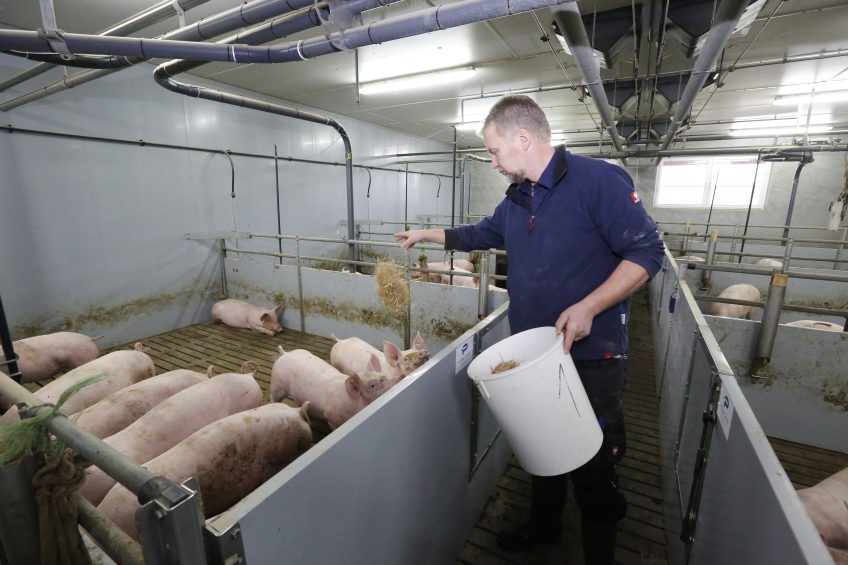“Straw works best against tail biting in pigs”

The best practice to reduce the risk of tail biting is by dispensing straw for the pigs. That is the practical experience at research farm Futterkamp in northern Germany.
The farm, part of the Chambers of Agricultural Commerce in the state Schleswig-Holstein, is focusing strongly on animal welfare. Reducing the amount of ‘processes’ for younger piglets is one of the key focus areas for this farm.
Providing straw: the start of a solution
Harm Kruse, farm manager, told Pig Progress’ sister title Boerderij that in conventional pig farms, providing straw offers a beginning of a solution, unlike providing enrichment material or more space. Supplying straw for the pigs from the beginning of the grower phase until late finishing does reduce the risk. Nevertheless, ‘accidents’ remain possible.
The farm is doing various different trials how to find the silver bullet in order to control tail biting, as the scientists believe nutrition offers opportunities to reduce the risk of tail biting.
Doubling crude fibre in feed
One trial aims to provide double the amount of crude fibre in the feed. The idea behind this is that a sense of satiety will acquiesce the pigs and make them less aggressive. The percentage of crude fibre is being raised to about 8%.

Find all there is to know about pig health using Pig Progress’ unique Pig Health Tool
Important in this trial is the type of crude protein that is being used. The trial applies soy hulls, sugar beet pulp and oats. Extreme high concentrations of crude fibre, however, should not lead to a reduced feed intake or the occurrence of stomach problems.
Tail as indicator of pig health
For Kruse, the tail is a good indicator for pig health. He said, “In case there’s a nice curl in the tail, and the pigs wave with it, the animals are doing well. Should the tail hang, I’m getting worried something might happen – or perhaps has already happened.”
Also interesting: German curly pig tail project into next phase
Once tail biting has started to occur or is about to occur, there’s an increase in labour hours, said Kruse. Keeping pigs with entire tails requires more labour, as it requires more and longer rounds through the pig houses, and sometimes more rounds with antibiotics become necessary.











